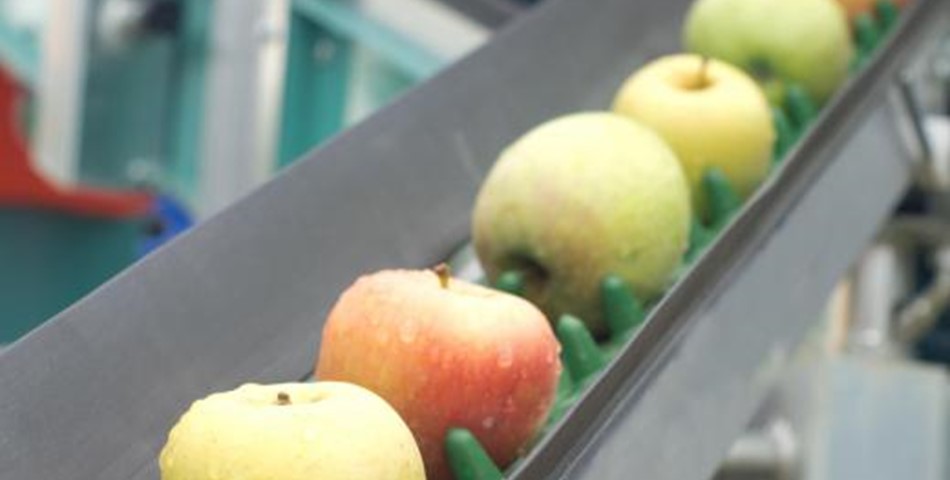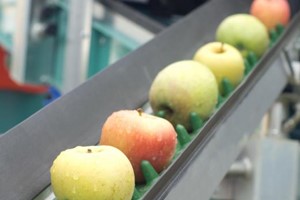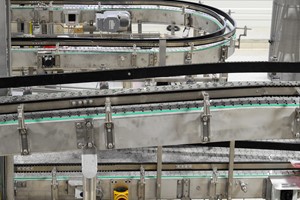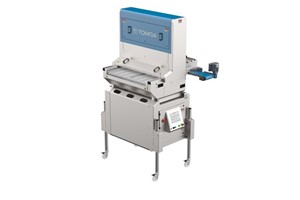Conveyor belts are used to transport materials through factories and other manufacturing facilities. Businesses that manufacture or process food products rely on special types of conveyors belts to provide effective sanitation and easy cleanup. These food conveyor belts are also used in other facilities that place a high value on sanitation, including chemical and pharmaceutical companies. The different types of food conveyor belts are often distinguished by their material and construction, which can have a significant impact on cleanup and contamination risk. These food conveyor belts include belts made from plastic, rubber, and stainless steel.
Stainless steel has long been one of the most popular materials used to make food conveyor belts. While these belts tend to be more expensive than other types of conveyor systems, they also are one of the most sanitary of all belt materials. Stainless steel is nontoxic and odorless, so it is unlikely to contaminate food. It also features a very smooth, non-porous surface that is unlikely to trap bacteria and other microbes. Finally, this material is easy to clean, and will not rust or corrode when exposed to water or cleaning solutions.
Another major benefit of stainless-steel food conveyor belts is that this material can accommodate a wide range of temperatures. Food processing plants often use extreme heat or cold when transporting or manufacturing food. While plastic conveyors aren't designed to withstand these temperatures, stainless steel won't melt, warp, or crack in extremely cold or hot climates.
Rubber conveyor belts are another common option for food manufacturers. These belts tend to cost less than other food conveyor belts but may not provide the same level of sanitation. While rubber can withstand frequent washing and exposure to a variety of chemicals, it may be more absorbent than metal belts. This means that bacteria and microbes can became trapped in small areas below the surface of the belt, leading to a risk of contamination. Rubber conveyor belts are generally not used to process high-risk items, like meat, but can be used in other food processing applications.
Many modern manufacturers have turned to thermoplastic food conveyor belts. These belts are made using extremely hard and dense forms of plastic that are able to resist tears, rips, and holes. They are also very smooth and easy to clean, with a non-absorbent surface. One limitation to plastic conveyor belts is that they may not be capable of withstanding the extreme temperature ranges sometimes associated with food processing.
How Conveyors Increase Efficiency
Improve Packaging Solution Efficiency with Conveyor Systems
Packaging Conveyors offer full automation options for moving your products through the packaging process. The automation minimizes product handling limiting the risk of damages and handling errors. With fewer products lost or broken your packaging solution will see improved operating efficiency and speed.
Conveyors Reduce the Use of Heavy Moving Equipment
Conveyor systems limit interaction between employees and heavy moving equipment like forklifts and pallet jacks. By shuttling products to and from your packaging equipment via conveyor you reduce close interaction with these dangerous machines. This can improve packaging speeds and reduce the risk of collisions and decreased fuel use.
Using Conveyors to Accumulate Products for Packaging
The automation process offers methods for product and package accumulation. Accumulation is the process of grouping related products and packages together in preparation for packing, handling or shipping. This is a practice commonly used in packaging produce, where Packers need quantities of products to pack instead of a solitary product.
Limit the Risk of Injury with Packaging Conveyor Systems
A conveyor belt or roller conveyor system limits employee handling of materials and packages. By limiting this interaction, you can reduce the risk of strain or repetitive motion injury. Fewer employee injuries help keep your staff at full strength and reduce costly insurance filings.
Conveyors Limit Packaging Line Starvation
Conveyors regulate product movement through a packaging solution. This ensures that packaging stations further down a production line are not starved for the resources they need to run.
Conveyor System Market
The global Conveyor System Market size is projected to reach USD 12.7 billion by 2027, from an estimated value of USD 9.4 billion in 2022, at a CAGR of 6.0%. The growing need for efficiently handling large volumes of materials and products in the manufacturing industry has increased the demand for industrial automation. A conveyor system is an important part of the material handling process and is involved in every industrial step. The growth of the conveyor system market is influenced by factors such as industrial growth, expansion, modernization of industries, and product and process-specific conditions.












